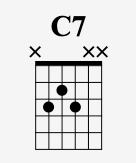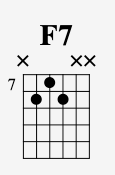Little Wing Guitar Lesson (Jimi Hendrix)
After learning thousands of songs. I’ve seen first-hand the influence of Jimi Hendrix’s guitar style on the history of music. And to be frank, it’s REMARKABLE.
Now to be fair. Hendrix wasn’t the first. In fact, his style was heavily influenced by a few key players that came before him. But he did take it to another level.
Today I want to share with you an iconic song of his. A fantastic song that proves the many intricacies of not only his LEAD playing but also his RHYTHM.
So make sure you’re tuned up and let’s dive into this “Little Wing” guitar lesson.
Who first wrote Little Wing?
"Little Wing" was written by legendary musician Jimi Hendrix. It was first recorded by the Jimi Hendrix Experience and was released on their 1967 album Axis: Bold as Love. The song is known for its beautiful and atmospheric guitar work, and it has become one of Hendrix's most celebrated and memorable compositions. "Little Wing" showcases Hendrix's...
When My Train Pulls In Guitar Lesson (Gary Clark Jr)
Gary Clark Jr. is widely regarded as one of the most prominent contemporary blues artists. He is playing a vital role in continuing the blues lineage into the modern era. So today I want to share with you a guitar lesson on his hit song “When My Train Pulls In”.
This epic jam is a 12-bar blues in the key of Em. In this post, we’ll cover the chords, riffs, and rhythms you need to know to get playing in this blues guitar style today.
So make sure you’re in tune and let’s dive into this “When My Train Pulls In” guitar lesson.
Who wrote "When My Train Pulls In"
The song "When My Train Pulls In" was written by American musician Gary Clark Jr. It is one of his original compositions and showcases his exceptional talent as a singer, songwriter, and guitarist. The song was featured on his major-label debut album Blak and Blu, released in 2012. "When My Train Pulls In" has become one of Gary Clark Jr.'s most popular and critically acclaimed...
Bad Moon Rising Guitar Lesson (CCR)
Few songwriters have been able to write as many extremely catchy riffs and melodies with very simple ideas as John Fogerty.
You see, so many of the classic CCR tunes are all based around just a few chords and very basic musical concepts. Yet at the same time are so incredibly SATISFYING to play for any level of guitar player.
Look, I’ve studied my share of fancy and complex music. But there’s just something about playing these iconic CCR songs and chord progressions that is just so fun!
And when it comes to timeless anthems, few can match the energetic vibe of "Bad Moon Rising".
So in this guitar lesson, I’m going to break down its catchy rhythm and groove so you can get playing it today.
PLUS this song is actually rooted in the blues. You will see the influence and I will point it out in the guitar part I explain.
The chord progression also uses only the I, IV, and V. Just like what we see in countless blues songs.
So grab your...
Messin' With The Kid Guitar Lesson (Buddy Guy & Junior Wells)
"Messin' with the Kid" is a blues song originally recorded by Junior Wells in 1960. It is an up-tempo twelve-bar blues that alternates between Afro-Cuban- and Little Richard-style rhythmic accompaniment. The song is considered a blues standard and has been recorded by a variety of artists, including The Blues Brothers.
In this blog post, we will take a closer look at how to play "Messin' with the Kid" on guitar. We will learn the basic chords and progression, as well as some of the more advanced techniques licks too.
So grab your guitar and let’s get started!
Messin' with the Kid Chords
The basic chords in "Messin' with the Kid" are C7, F7, and G7.
All three of these chords can use the same chord grip, just shifted around the neck.
Here is how I would play each chord.
For C7 I would play this:

F7 can be played the same way just shifted higher up the neck like this:

And finally, G7 is again the same shape. However this time I shifted the entire chord grip to...
How to Play Happy Birthday on Guitar (With Bluesy Ending)
Today I want to share with you how to play “Happy Birthday” on guitar. Plus as a bonus at the end I will also share how to add a cool bluesy ending to it.
Playing “Happy Birthday” for your friends and family can mean a lot to them. Therefore, it’s a great one to know. You want to be able to pull it off at the drop of a hat.
So in this lesson, I am going to cover everything you need to know to do exactly that.
So get tuned up, and let’s get started!
What are the chords for Happy Birthday?
To play “Happy Birthday” on guitar you will only need to know 3 chords. The chords we are going to play are G, C, and D. Here is how I would play each shape.
For G, I would play all 6 strings and use 4 fingers in the fretting hand like this:

D is the next chord we will move to in the progression, and this one is played from the 4th string down like this:

And finally, C is the last we will use and this one is played from the 5th...
The ULTIMATE Before You Accuse Me Guitar Lesson
Today I want to share with you the ULTIMATE “Before You Accuse Me” guitar lesson.
This song is a classic blues guitar tune and I’m going to break down a number of iconic versions, from the Bob Diddley original version from 1957 to later cover versions as well.
You’ll learn the chords, theory, and even how to play epic blues solos over this classic blues jam.
So grab your guitar and let’s get started!
Who wrote Before You Accuse Me?
"Before You Accuse Me" is a classic blues song written and originally recorded by Bo Diddley. "Before You Accuse Me" was recorded in 1957, and released as a single by Checker Records, a subsidiary of Chess Records.
The song was part of Bo Diddley's self-titled debut album, which is often referred to as "Bo Diddley."
This groovy tune is considered a blues standard and has been covered by numerous artists over the years, demonstrating its lasting popularity and influence in the world of blues and rock...
Are You Gonna Go My Way Guitar Lesson (Lenny Kravitz)
Today I want to share with you how I play “Are You Gonna Go My Way” as recorded by Lenny Kravitz.
I’ve noticed a few things about this song in particular. Things that will help players elevate both their blues and rock playing simultaneously.
This song is a great example of how blues guitar led straight into rock. For example, the main riff to “Are You Gonna Go My Way” is a straight-up blues riff.
In fact, so much so, that it sounds like it could have been played in Muddy Waters’s version of “Catfish Blues.”
In this post, I’ll walk you through this iconic riff, the chords you’ll need, and even some scales to further explore your own style with it.
So make sure you’re tuned up and let’s get started!
Who wrote Are You Gonna Go My Way:
"Are You Gonna Go My Way" is a song written by Lenny Kravitz and Craig Ross. Kravitz, an American singer-songwriter and musician, composed the music...
Gary Clark Jr Guitar Lesson (Bright Lights)
Today I want to share with you an awesome Gary Clark Jr. guitar lesson. We’ll dive deep into his soulful song “Bright Lights”.
This tune is a one-chord blues, and I’ll break down how to play the rhythm and lead step-by-step.
So grab your guitar and let’s jam the blues!
Who wrote Bright Lights?
The song "Bright Lights" was written by Gary Clark Jr. himself. Gary Clark Jr. is an American musician and singer-songwriter known for his skillful guitar playing and blending various genres such as blues, rock, and soul. "Bright Lights" is one of his popular songs and has received critical acclaim for its energetic and soulful sound.
Although "Bright Lights" by Gary Clark Jr. has a similar title to another very famous blues song “Bright Lights, Big City”, by Jimmy Reed. The two songs are very different musically. They only really share similar titles and that’s it. To prove this I also have another lesson explaining the guitar...
Come Together Guitar Lesson (Beatles)
Over the years countless students have come to me and said, “I’m not really a blues player”, but then in the same breath tell me about how they are working on tunes like “Come Together” or “Johnny B. Goode”. And that’s what they really want to play… Not the blues…
Well, here’s the thing…
You can’t play any popular music from the past 120 years without playing the blues.
If you play guitar, you have to learn the blues. And even if you think you don’t, you’ll still be learning it inadvertently through other songs you want to play.
So today I want to show you how “Come Together” is deeply rooted in blues.
When you can identify patterns, like what I’m going to share with you in this lesson, you can learn songs WAY faster.
It gets EASIER, and songs make more sense.
Plus after sitting in at countless jam nights, and with various bands I can say with certainty that...
3 Killer Chuck Berry Blues Guitar Licks
Today I want to share 3 essential Chuck Berry-style blues guitar licks with you. These 3 licks will give you immediate insight into some of his signature guitar moves, including tricks like staccato bends, double-stops, and repetitive phrases.
All of these licks are in the key of Bb major. But once you get them down, you can move them to any key you want by simply changing the fret they start on.
So make sure you’re tuned up and let’s get started!
Lick # 1
Lick #1 starts off with a quick bend on the 8th fret of the 3rd string. Here we are right away going to be a signature Berry technique, staccato bends. A staccato bend is a bending technique where the bent note is played with short and distinct, separated articulation.
So instead of sustaining the bent note, it is played briefly and quickly released, creating a crisp and punchy effect. The staccato bend adds rhythmic emphasis and can be used to create a dynamic and expressive playing style. This note is going...
